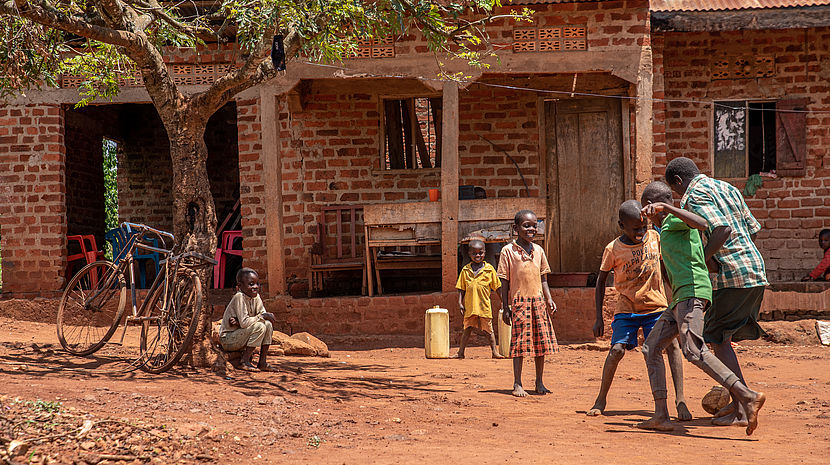Re-imagine the World this World Children’s Day

6-year-old Zephaniah (sitting under the tree) has bi-lateral cataract and is unable to join his cousins while playing football. He is currently undergoing treatment at CBM partner Mengo Hospital in Uganda.
© Anthony Atiko
World Children’s Day is celebrated every year on the 20th of November, the day in 1989 when the UN General Assembly adopted the Convention on the Rights of the Child. On this Day, we raise awareness, promote and celebrate children’s rights and children welfare, in order to build a better world for them.
Did you know?
- More than one billion of the global population are people with disabilities. Of these, 150 million represent children (under the age of 18) with a disability. Amongst those aged 0-14 years, roughly 93 million live with a moderate or severe disability and 13 million children live with severe difficulties.
- Children with disabilities are often likely to be among the poorest members of the population. They are less likely to attend school, access medical services, or have their voices heard in society. Their disabilities also place them at a higher risk of physical abuse, and often exclude them from receiving proper nutrition or humanitarian assistance in emergencies.
This story below of a boy who was failing simply because he couldn’t see, is only one of hundreds of thousands of children in similar situations all over the world. It demonstrates what is possible if there is the will to make it happen.
Ghulam’s story

Eight-year-old Ghulum (centre, with specs) and his family.
© SIOVS/CBM
Eight-year-old Ghulam Murtaza Shah lives in Bhaledino Kaka, a small village in Sindh Province, Pakistan. His life began to change following an eye screening at his school, implemented by the Sindh Institute of Ophthalmology and Visual Sciences Team under the Peek/CBM School Eye Health Initiative.
He had his eyes screened with a Peek smart phone vision test app. This technology enables people with no previous experience of eye health to both provide an effective on-the-spot eye screening service, but also captures the data to facilitate more effective referral to health services.
Ghulam was born with cleft lip. Whilst he was still a baby, he received surgery for the condition, but his parents were unaware he also had a problem with his eyes.
Ghulam did not perform well at school. He took to hiding away at the back of the classroom. His teachers reported his lack of attention and interest in school activities. His confidence was so low, he never answered questions or ventured an opinion. After school, he didn’t sit with his brothers and sisters, but instead stood very close to the TV screen. His family became worried, but his father had no work and there were no resources to explore treatment.
Following his Peek test, he was referred to the Rural Health Centre where an in-depth checkup was done by an optometrist. He was prescribed glasses and patching therapy. His parents were concerned about the fact their son needed such a strong prescription for his glasses, feeling that a child of eight should not be wearing glasses that are usually prescribed for older people, but were reassured after a talk with the optometrist.
After receiving his glasses, Ghulam Murtaza Shah’s life became very different. He found everything much easier and started to perform better at school. These days, he is at the very top of his class.
Now I can play cricket with my brothers, watch TV from the sofa, read books and draw pictures of my favourite cartoon characters. My dream is to become a doctor.Eight-year-old Ghulam.